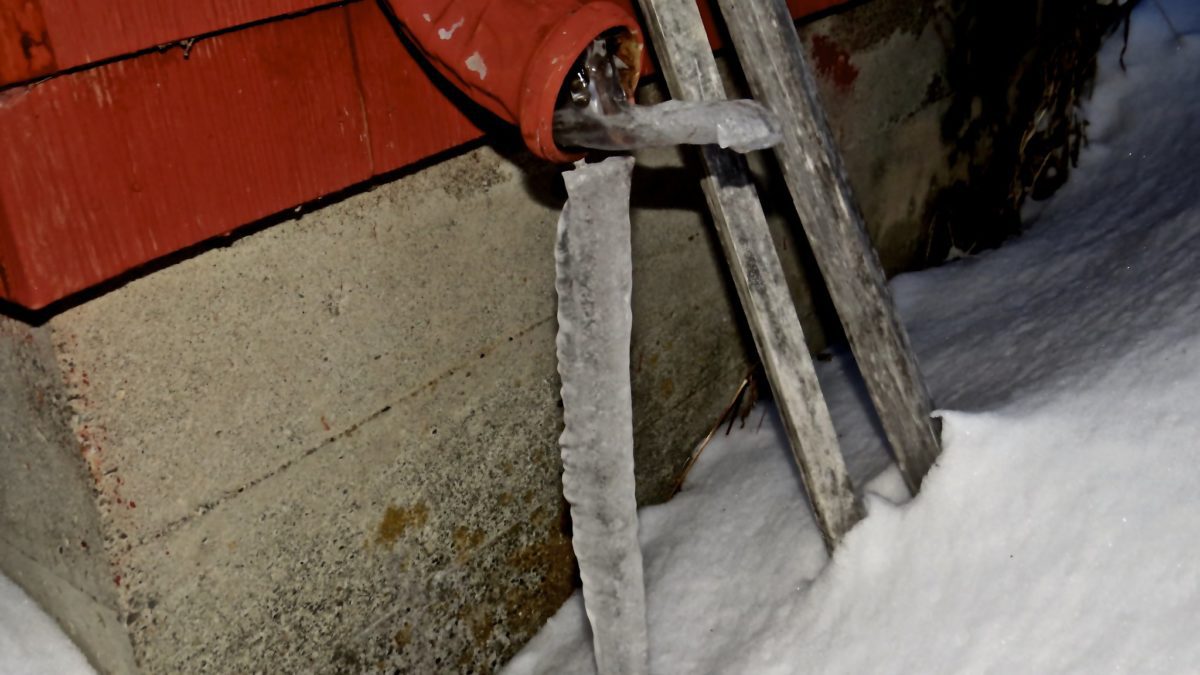Community
‘Tis the season for frozen pipes

Its frozen pipes season in Park City, UT. Photo: Emily Witham
PARK CITY, Utah — Frozen pipes can be a problem that will impose costly damage throughout the season. The government agency that oversees Utah counties has the following helpful tips and tricks.
Water expands as it freezes. This expansion puts tremendous pressure on whatever contains it, including metal or plastic pipes. Pipes can freeze when temperatures drop rapidly or stay below the freezing point (32° Fahrenheit/ 0° Celsius) for an extended period. Once a pipe freezes and has expanded, the pipe can break and cause flooding.
No matter the strength of a container, expanding water can cause pipes to break, posing a significant water damage risk during the winter months. When water invades, it creeps into every crevice and crack, causes thousands of dollars in damage to clean up and repair, and even opens the door for mold and mildew growth.
Pipes that freeze most frequently are exposed to severe cold, like outdoor hose bibs, swimming pool supply lines, and water sprinkler lines; water supply pipes in unheated interior areas like basements and crawl spaces, attics, or garages; and pipes that run against exterior walls that have little or no insulation.
Frozen pipes — and the problems they cause — can be prevented by following a few basic steps:
- Be prepared for a potential catastrophe by identifying where your plumbing pipes run and locating water shut-off valves. Always make sure you have easy access to the main water shut-off in case of emergency.
- All outdoor water lines (i.e., sprinkler systems) should be completely drained in the fall so that there is no moisture left inside to expand in freezing temperatures. Remove and drain hoses and shut off valves to outdoor hose bibs.
- Water pipes located in unheated exterior walls, basements, crawl spaces, or garages should be well insulated with sleeve-style pipe insulation to help maintain temperatures above 32 degrees Fahrenheit and prevent freezing. It will also help to ensure that all rooms are adequately insulated and gaps in leaky windows and doors are closed to prevent blustery drafts.
- If not during the whole winter season, you may consider opening a couple of faucets in the coldest areas where pipes would most likely freeze just enough to let out a trickle of water. By keeping the faucets open, the flowing water helps prevent pipes from freezing.
- The main thing is to make sure your pipes remain sufficiently warm throughout the winter — that means keeping cold air out or bringing warm air to your cold pipes. Plumbing that runs along an exterior wall through an under-sink cabinet in the kitchen, for example, will be colder if you keep the cabinet doors shut. Leave them slightly ajar, however, and they’ll be warmed with the rest of the room as your HVAC system operates.
If pipes do freeze, there are steps you can take to minimize water damage:
- Find the frozen pipe by opening every faucet to see which, if any, just produces a trickle of water — this is a sign of a frozen pipe somewhere between the faucet and the water source. Starting at the plumbing nearest the faucet, follow the line away from it and feel every few feet to find the coldest pipes, which will likely hold the icy blockage. And, remember: If one pipe has frozen, that means others may be susceptible as well. To be sure, check all of the faucets.
- Shut off the water supply to the location of the frozen pipes (or, if easier, the whole building). When the frozen blockage does finally thaw, it may let out any additional liquid backed up behind it and turn up a surprise leak, so grab a bucket, towels, and perhaps a mop to prepare yourself for any icy water that gushes out.
- Drain all of the water remaining in the building by opening every faucet on every sink, shower, and tub and flushing each toilet once.
- Apply heat to the frozen sections of pipe using an electric heating pad, a hairdryer, or a portable space heater until the full water pressure is restored. Warm the edge of the area closest to the nearest outlet in the plumbing — like in the kitchen or bathroom — so that steam or water can easily escape. A space heater could also do the trick to concentrate warmth wherever it’s needed. Never use a blowtorch, propane heater, or other open flames.
- As you turn the water back on throughout the building via the main water supply valve, be on the lookout for any leaks — if you spot any, you’ll need to cut the water supply once again and schedule repairs ASAP. Close valves and faucets left open from Step 1. If your frozen pipes appear to be completely thawed, however, focus your energy once more on the preventative measures you can take into your own hands to avoid such a dire situation in the future.
If you experience frozen or, broken pipes take photos of the damage, which will help make an insurance claim easier to process and prove useful. Counties have the authority to call a restoration company (i.e., Utah Disaster Kleanup) immediately to mitigate their damages.



















